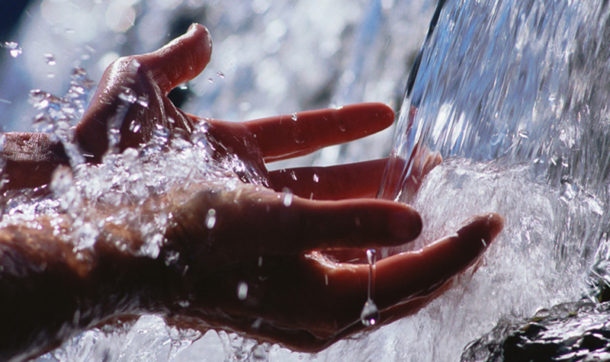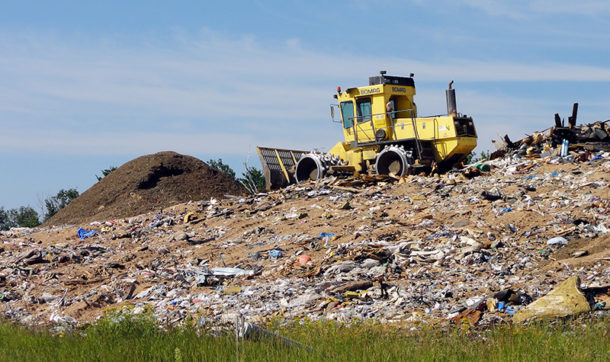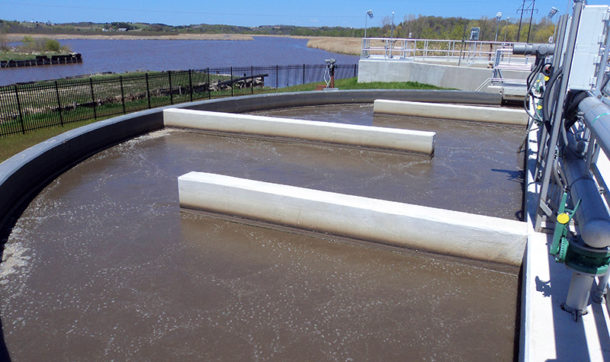What Are PFAS, and Why Are They an Emerging Health Concern?

We use many organic and inorganic chemical compounds to develop everyday products, and these chemicals sometimes make it into our soil and groundwater and eventually into our water supply. Consider a group of fluorinated chemicals called PFAS, or per- and polyfluoroalkyl substances. As a group, PFAS are resistant to heat and repel water and oil, qualities that make them useful for many industrial operations and consumer products. Unfortunately, these same properties make them very stable and persistent in the environment with a potential to bioaccumulate in human and animal tissue, creating a potential human health risk.
Information is still being collected on the effects of PFAS and how best to sample, analyze, and remediate these contaminants. The following summarizes a series of fact sheets developed by the Interstate Technology Regulatory Council.
What Are PFAS?
Per- and polyfluoroalkyl substances (PFAS) are a group of over 3,000 man-made chemicals that have been produced since the mid-20th century. They excel at repelling water and oil and reducing friction and are temperature resistant. These beneficial properties have led to the use of PFAS in a wide range of consumer products and industrial applications. PFAS are used in the aerospace, photographic imaging, semiconductor, automotive, construction, electronics, and aviation industries. They were used in nonstick coatings for cookware and paper takeout packaging, in moisture-repellent coatings for textiles, and, because of their temperature resistance, in firefighting foams.
 During manufacturing and use, these chemicals have made their way into the environment. They are found globally in air, soil, surface water, groundwater, and wildlife and human tissue and blood. PFAS in the environment are contaminants of emerging concern (CECs). CECs are chemicals that have entered the environment and have a known or potentially unacceptable risk to human health.
During manufacturing and use, these chemicals have made their way into the environment. They are found globally in air, soil, surface water, groundwater, and wildlife and human tissue and blood. PFAS in the environment are contaminants of emerging concern (CECs). CECs are chemicals that have entered the environment and have a known or potentially unacceptable risk to human health.
How Do PFAS Enter the Environment?
PFAS enter the environment through different media and transport processes, including discharges to air, deposition and sorption onto soil particles, infiltration through the soil to groundwater, and runoff in surface water with deposition to sediments. While PFAS originate from many industrial processes and and are in numerous consumer products, they are consistently associated with four main activities: fire training/fire response sites, industrial sites, landfills, and wastewater treatment plants/biosolids.
Fire Training/Fire Response Sites
Aqueous firefighting foams containing PFAS were used for decades at military installations, commercial airports, training facilities, railyards, and other sites. PFAS in the firefighting foam can leach into the soil at the site of application; infiltrate through the soil into the groundwater; travel with surface water runoff to nearby bodies of water; and travel through the air, landing on the ground and in surface water.
Landfills
PFAS are commonly associated with landfills as landfills are repositories for PFAS-contaminated waste from multiple sources, including contaminated industrial waste, PFAS-treated consumer products, and contaminated wastewater sludge. These chemicals have the potential to leave the landfill and enter the environment in three primary ways: air emissions from the waste before burial; landfill leachate infiltrating through the soil into groundwater beneath unlined landfills; and transfer to wastewater treatment plants through the collection and treatment of leachate.

Industrial Sites
Industrial sites at which PFAS are part of the manufacturing process are another large contributor to environmental contamination. The chemicals can be released through stormwater runoff, on/off site disposal of waste, discharges to wastewater treatment plants, leaks or spills, and air (stack) emissions.
Wastewater Treatment Plants (WWTPs)
PFAS contamination has also been shown to be associated with WWTPs. While not technically a source, WWTPs receive PFAS-contaminated water from industrial discharges and leachate from landfills and other sources. Once at the WWTP, PFAS can enter the environment through the discharge of effluent, accidental release from surface impoundments, land application of biosolids as a soil amendment, disposal of biosolids from the water treatment process, and air emissions.
 Due to their persistence, PFAS that enter the environment continue to accumulate. Accumulation in water is a major concern because it presents a potential for direct exposure through the ingestion of contaminated drinking water or ingestion of crops irrigated with contaminated water. PFAS may also enter the food chain by accumulating within aquatic organisms like fish.
Due to their persistence, PFAS that enter the environment continue to accumulate. Accumulation in water is a major concern because it presents a potential for direct exposure through the ingestion of contaminated drinking water or ingestion of crops irrigated with contaminated water. PFAS may also enter the food chain by accumulating within aquatic organisms like fish.
Sampling and Remediation
Sampling for PFAS isn’t easy. The materials and instruments commonly used to sample environmental media often contain PFAS compounds. Furthermore, governing agencies are still developing standard procedures for sampling, analysis, and remediation of PFAS. Because of their unique composition and variety, these chemicals tend to form complex mixtures that change over time. At any given environmental investigation site, there can be very low concentrations of different PFAS that all must be sampled and analyzed.
Remediation depends on the source and location of PFAS within the environment as well as other site-specific considerations. New technologies or combinations of current technologies may be required to remediate PFAS contaminants.
Remediation of PFAS in Solids:
- Capping: Placing a cap over contaminated materials is a common remediation technique to prevent direct contact with contaminated soil. Capping doesn’t destroy the contamination, but it does prevent further leaching of contaminants into groundwater.
- Excavation and disposal: This involves removing the contaminated material from a site and disposing of it in either a lined-permitted landfill or incineration facility.
- Sorption and stabilization: Material like activated carbon, resins, minerals, etc., are added to the soil at the contaminated site. These additives adsorb/stabilize PFAS, reducing the potential for them to migrate to groundwater.
- Thermal: High heat applied to contaminated material will either destroy or vaporize these chemicals. If vaporization occurs, they can be collected and destroyed.
Remediation of PFAS in Liquids:
- Sorption: Contaminated water is passed through granular media that collects the contaminants through adsorption or ion exchange.
- Precipitation/flocculation/coagulation: Coagulants are added to contaminated water, encouraging the formation of solids that trap PFAS for removal and disposal.
- Redox manipulation: Involves changing the oxidization potential of the water by adding coagents/nutrients that destroy the contaminants.
- Membrane filtration: Passing pressurized contaminated water across membrane pores, where contaminants are rejected, and treated water passes through.
Why You Should Be Concerned About PFAS
These persistent and highly toxic chemicals in the environment pose risks to human health and ecological communities such as fish and wildlife. The lack of regulatory standards and cost-effective remedial options for most of these compounds presents great uncertainty for the regulated community. The widespread presence of these contaminants at industrial facilities, in landfills, at wastewater treatment plants, and in water supplies presents potential liability issues for many of our clients. If you have a question or concern about these emerging contaminants of concern, please give us a call.
Reach out to Ayres’ Planning + Development experts for more information regarding PFAS or for other general questions.

Post a comment: